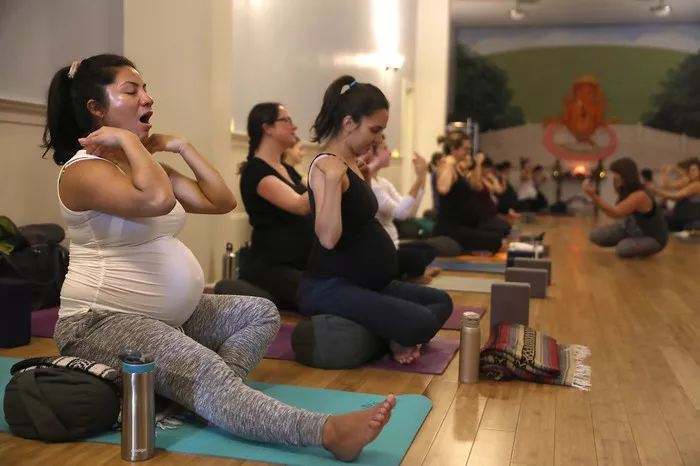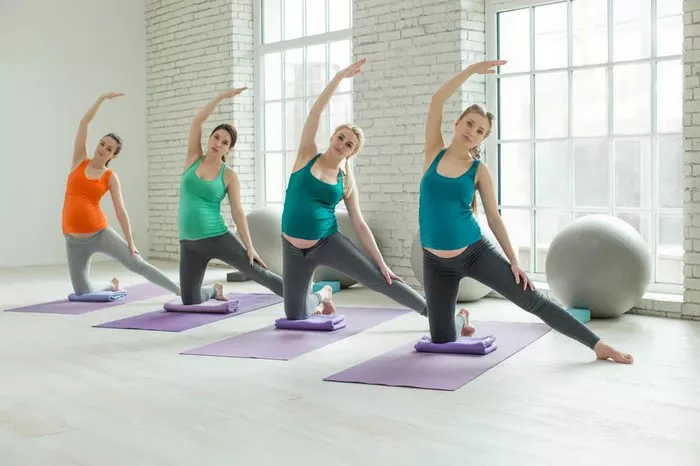Yoga, a practice that has its roots in ancient India, has evolved into a diverse and multifaceted discipline, with different styles and schools of thought emerging over the years. One of the most well-known and widely practiced forms of yoga is Iyengar yoga, which was founded by the renowned yoga master B.K.S. Iyengar. This style of yoga emphasizes precision, alignment, and the use of props to help practitioners achieve optimal postures and a deeper understanding of their bodies.
In this article, we will explore what Iyengar yoga is, its core principles, and the many benefits it offers to practitioners. Whether you are new to yoga or an experienced practitioner, this guide will provide you with a comprehensive understanding of Iyengar yoga and how it can enhance your physical, mental, and emotional well-being.
The Origins of Iyengar Yoga
Iyengar yoga is named after its founder, B.K.S. Iyengar, who was born in India in 1918. Iyengar’s journey into yoga began in his youth when he was introduced to yoga by his brother-in-law, T. Krishnamacharya, one of the most influential yoga teachers of the 20th century. Iyengar, who struggled with his health as a child, found yoga to be a transformative tool that helped him regain strength and vitality.
Over the years, B.K.S. Iyengar dedicated himself to the study and practice of yoga, refining and developing his approach to the discipline. In 1966, Iyengar published his first book, Light on Yoga, which became a global bestseller and introduced millions of people to the practice of yoga. He went on to establish the Ramamani Iyengar Memorial Yoga Institute in Pune, India, where he taught students from around the world and further advanced his teachings.
Core Principles of Iyengar Yoga
1. Alignment
Alignment is one of the most fundamental principles of Iyengar yoga. It refers to the correct positioning of the body in each yoga posture (asana) in order to achieve optimal physical benefits and prevent injury. In Iyengar yoga, practitioners are encouraged to pay attention to the details of their body’s alignment, such as the position of the feet, knees, hips, spine, and shoulders. This focus on alignment helps ensure that the body is working in harmony, creating a stable and balanced foundation for each posture.
B.K.S. Iyengar believed that alignment was not just about physical precision but also about creating awareness of the body and mind. By practicing alignment in each posture, practitioners learn to be mindful of their body’s sensations and energy, cultivating a deeper connection to themselves.
2. Use of Props
A distinctive feature of Iyengar yoga is the use of props, such as blocks, straps, blankets, and bolsters. These props are used to assist practitioners in achieving the correct alignment, especially in challenging postures. Props can also help support the body in restorative poses, allowing practitioners to hold postures for longer periods of time without strain or discomfort.
The use of props is one of the reasons why Iyengar yoga is accessible to people of all ages and fitness levels. Whether you are a beginner or an advanced practitioner, props can help you modify postures to suit your individual needs, making the practice safer and more effective.
3. Sequencing and Timing
In Iyengar yoga, the sequence of postures is carefully planned to create a logical flow of movements that build upon one another. This sequence is designed to prepare the body for more advanced postures and to ensure that each part of the body is worked evenly. The timing of each posture is also important, as Iyengar yoga emphasizes holding poses for extended periods, allowing the body to deepen into the posture and experience its full benefits.
The practice is often structured into a series of stages, starting with simpler poses and progressing to more complex ones. This step-by-step approach allows practitioners to gradually build strength, flexibility, and balance while minimizing the risk of injury.
4. Breath Awareness
Breath is an integral part of yoga practice, and in Iyengar yoga, practitioners are taught to synchronize their breath with movement. Breath awareness helps to calm the mind, increase concentration, and facilitate the flow of energy throughout the body. In many postures, specific breathing techniques are used to deepen the experience and enhance the benefits of the asanas.
5. Mindfulness and Concentration
In Iyengar yoga, the practice extends beyond the physical postures. Practitioners are encouraged to cultivate mindfulness and concentration throughout the practice. This means being fully present in the moment, paying attention to the sensations in the body, and focusing the mind on the task at hand. This meditative quality of Iyengar yoga can lead to greater mental clarity, emotional stability, and a sense of inner peace.
The Benefits of Iyengar Yoga
1. Improved Flexibility
One of the most well-known benefits of yoga is increased flexibility, and Iyengar yoga is no exception. Through regular practice, Iyengar yoga helps to lengthen and stretch muscles, joints, and connective tissues, improving overall flexibility. The emphasis on alignment and proper technique allows practitioners to gradually increase their range of motion without overstretching or straining.
2. Increased Strength and Endurance
While Iyengar yoga is often associated with flexibility, it also builds strength and endurance. Holding poses for extended periods helps to develop muscular strength, particularly in the core, legs, and arms. As practitioners progress in their practice, they are able to hold more challenging postures, building stamina and resilience both physically and mentally.
3. Improved Posture and Alignment
Due to the focus on proper alignment in every posture, Iyengar yoga can significantly improve posture. Many people spend a large part of their day sitting or standing with poor posture, which can lead to muscle imbalances, tension, and discomfort. By practicing Iyengar yoga, individuals learn how to align their bodies correctly, which can alleviate back pain, shoulder tension, and other postural issues.
4. Enhanced Balance and Coordination
The emphasis on alignment and precision in Iyengar yoga also helps to improve balance and coordination. Many postures, such as standing poses and inversions, require practitioners to engage their core muscles and stabilize their bodies. Regular practice of these poses leads to improved balance and coordination, which can enhance performance in other physical activities and reduce the risk of falls, particularly in older adults.
5. Stress Relief and Relaxation
Like all forms of yoga, Iyengar yoga is highly effective for reducing stress and promoting relaxation. The slow, deliberate movements, along with breath awareness and concentration, activate the parasympathetic nervous system, which helps to calm the mind and reduce anxiety. Iyengar yoga incorporates restorative poses, which are particularly beneficial for promoting deep relaxation and allowing the body to release tension.
6. Improved Mental Clarity and Focus
Through its emphasis on mindfulness and concentration, Iyengar yoga helps to improve mental clarity and focus. The practice encourages practitioners to remain present and aware of their body, breath, and thoughts. This heightened awareness can lead to a greater sense of mental clarity, improved concentration, and enhanced cognitive function. Practitioners often report feeling more focused, calm, and centered after a yoga session.
7. Injury Prevention and Rehabilitation
Because Iyengar yoga prioritizes proper alignment and the use of props, it is an excellent practice for injury prevention and rehabilitation. The careful attention to detail helps to ensure that the body is moving in the correct way, reducing the risk of strain or injury. Furthermore, Iyengar yoga can be used as a rehabilitative tool for those recovering from injuries. The use of props allows individuals to modify postures and work within their limitations, making the practice accessible even for those with physical challenges or injuries.
8. Holistic Well-Being
Iyengar yoga is not just a physical practice; it is a holistic approach to well-being that integrates the body, mind, and spirit. The practice encourages self-awareness, emotional balance, and a deeper connection to oneself. By fostering a sense of mindfulness and presence, Iyengar yoga can contribute to a more balanced and fulfilling life. It helps individuals cultivate resilience, patience, and acceptance, leading to a greater sense of peace and harmony both on and off the mat.
9. Improved Respiratory Health
Breathing exercises (pranayama) are an integral part of Iyengar yoga, and they help improve respiratory function. Practicing conscious breathing enhances lung capacity, increases oxygen intake, and promotes better circulation. This can be especially beneficial for individuals with respiratory conditions, such as asthma, or for those who wish to improve their overall lung health.
10. Better Sleep Quality
Due to its ability to reduce stress and promote relaxation, Iyengar yoga can also improve the quality of sleep. The calming effects of the practice help to quiet the mind and relax the body, making it easier to fall asleep and stay asleep. Practitioners often report better sleep quality and a greater sense of restfulness after incorporating Iyengar yoga into their routine.
Conclusion
Iyengar yoga is a highly beneficial and accessible style of yoga that emphasizes precision, alignment, and mindfulness. By focusing on correct posture, breath awareness, and the use of props, Iyengar yoga provides a safe and effective way for individuals to improve their physical health, mental clarity, and emotional well-being. Whether you are looking to increase flexibility, build strength, reduce stress, or improve your posture, Iyengar yoga offers a comprehensive approach to achieving a balanced and healthy life. With its wide range of benefits, Iyengar yoga is a practice that can be enjoyed by individuals of all ages and fitness levels, making it a valuable addition to anyone’s wellness routine.
Related Topics:

















